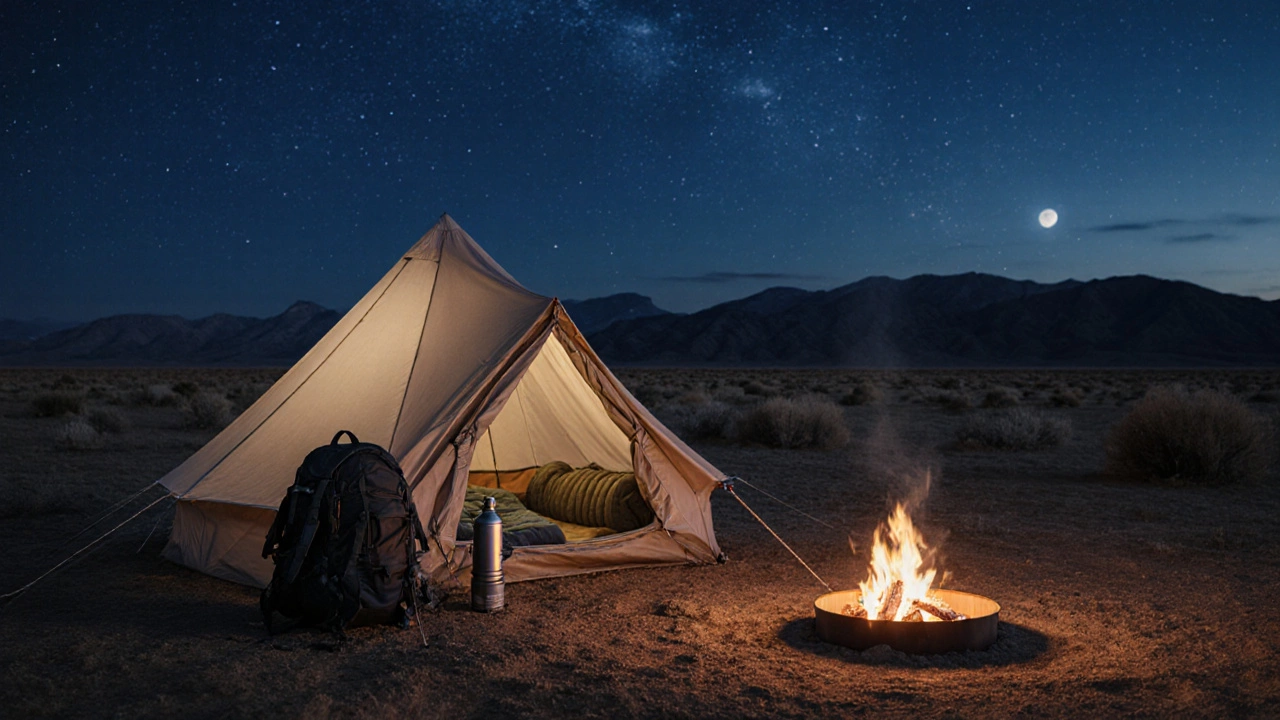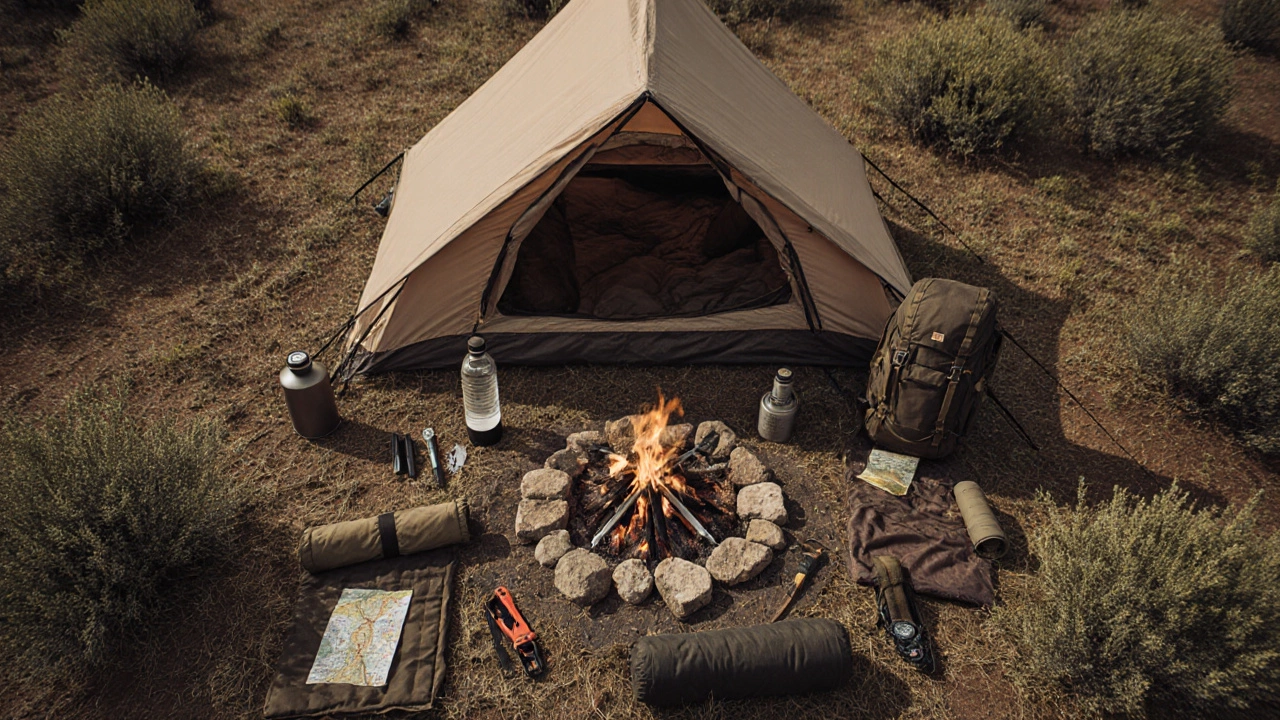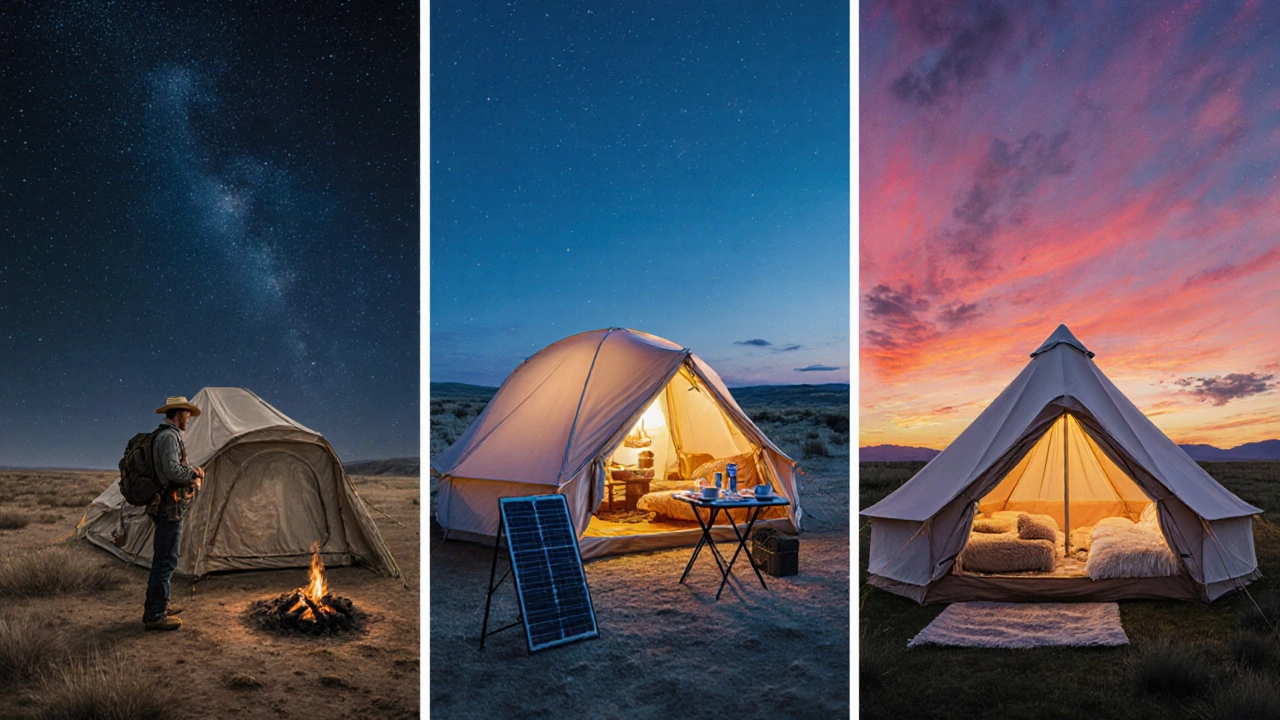Cowboy Camping Explained: A Rustic, Eco-Friendly Outdoor Adventure

Key Takeaways
- Cowboy camping is a minimalist, back‑to‑basics style that blends the spirit of the Old West with modern Leave No Trace principles.
- Essential gear includes a durable tent, a simple fire pit or portable stove, and a well‑packed backpack.
- Choosing primitive sites, using natural shelter, and respecting wildlife keep the impact low.
- Compared with glamping or traditional camping, cowboy camping is cheaper, more authentic, and greener.
- Follow a step‑by‑step checklist to set up safely and leave no trace.
What Exactly Is Cowboy Camping?
When people talk about cowboy camping is a primitive, low‑tech form of outdoor stay that mimics the way cowboys lived on the open range. Instead of fancy cabins or power hooks, you rely on a sturdy tarp or canvas, a simple fire, and a pack full of basics. The idea is to strip away the comforts that turn camping into a hotel stay and focus on the land, the sky, and the raw experience of living off the land.
Core Principles and How They Tie Into Eco‑Friendly Living
Cowboy camping aligns naturally with the Leave No Trace set of guidelines that help outdoor enthusiasts minimize their impact on nature. The six principles-Plan Ahead, Travel & Camp on Durable Surfaces, Dispose of Waste Properly, Leave What You Find, Minimize Campfire Impacts, and Respect Wildlife-become the rulebook for a successful cowboy outing.
Because you’re carrying everything in a pack a backpack designed to hold gear, food, and water for a multi‑day trip, you naturally limit the amount of equipment you can bring. That limitation forces you to choose lighter, reusable, and often locally sourced items, which cuts down on waste and carbon footprint.
Essential Gear Checklist
Below is a practical list of gear that covers safety, comfort, and sustainability without turning your trip into a luxury expedition.
- Tent A lightweight, weather‑resistant canvas or nylon shelter that can be pitched on bare ground (3‑season, with a footprint to protect the soil).
- Campfire A small, controlled fire built in a fire ring or on a fire blanket, used for cooking and warmth or a portable stove A compact, fuel‑efficient burner for fire‑free cooking if fire bans apply.
- Sleeping bag A down or synthetic insulated bag rated for the lowest night temperature you expect.
- Sleeping pad An inflatable or foam mat that adds insulation from the ground.
- Water filtration system A lightweight pump or straw filter that removes bacteria and protozoa from natural sources.
- Multi‑tool with knife, pliers, and screwdriver.
- Reusable containers for food, a small pot, and a metal cup.
- LED headlamp with extra batteries.
- Map, compass, and a fully charged phone with offline maps.
- First‑aid kit and bear‑proof food storage (if required).

Choosing the Perfect Site
Unlike glamping sites that offer amenities, cowboy camping sites are often found on public lands, national forests, or BLM (Bureau of Land Management) parcels. Follow these steps:
- Identify a public land area that permits dispersed camping and check for any fire restrictions.
- Use topographic maps or apps like Gaia GPS to spot level ground, nearby water, and natural windbreaks.
- Survey the spot for existing campsites. If you find old fire rings or cleared patches, use them to avoid creating new impact.
- Set up your tent on durable surfaces such as rock, sand, or established grass to protect vegetation.
- Arrange the fire pit or stove downwind from your sleeping area and any wildlife trails.
Step‑by‑Step Camp Setup
Here’s a quick run‑through from arrival to bedtime.
- Stake the tent. Clear debris, hammer stakes, and tension the guylines to keep the shelter stable in wind.
- Build a low‑impact fire. Gather dead‑fall that’s already on the ground, keep the flames small, and use a fire ring or stone circle.
- Prepare your water. Locate a stream, filter the water, and fill reusable bottles.
- Cook your meals. Use a portable stove or the fire for simple dishes-think beans, rice, and dehydrated veggies.
- Secure food. Bury food in a bear bag or use a lockbox if the area requires it.
- Set up your sleeping area. Inflate the pad, lay out the sleeping bag, and add a warm hat for extra insulation.
- Nighttime routine. Extinguish the fire fully, store all gear inside the tent, and enjoy the starry sky.
Comparing Cowboy Camping, Glamping, and Traditional Camping
| Aspect | Cowboy Camping | Glamping | Traditional Camping |
|---|---|---|---|
| Comfort Level | Basic shelter, sleeping bag | Luxury tent or cabin, beds, electricity | Mid‑range tent, optional accessories |
| Cost per Night | Equipment cost only (~$10‑$20 for campsite fee) | $150‑$300 | $30‑$70 |
| Environmental Impact | Low - minimal infrastructure, Leave No Trace | Higher - built structures, utilities | Moderate - depends on gear and practices |
| Authenticity | High - back‑to‑basics, self‑reliant | Low - curated experience | Variable - can be authentic or comfort‑focused |
| Required Skills | Navigation, fire‑building, weather awareness | Minimal - staff handles logistics | Basic - tent setup, cooking |

Tips for a Sustainable Cowboy Camping Trip
- Pack reusable items. Metal mugs, silicone bags, and a stainless‑steel water bottle cut down on disposable waste.
- Use natural lighting. A headlamp with a red filter preserves night vision and reduces battery use.
- Leave no trace on fire sites. Scatter cooled ashes over a wide area or pack them out if the site is fragile.
- Respect wildlife. Store food away from sleeping areas, keep a safe distance, and never feed animals.
- Minimize pack weight. Lighter loads mean less fuel consumption if you’re driving to the trailhead.
Common Pitfalls and How to Avoid Them
Even seasoned outdoor lovers can slip up. Here are the most frequent mistakes and the fixes.
- Choosing a wet site. Check the forecast and look for signs of recent rain. Pitch on higher ground.
- Overpacking. Stick to the rule: everything you bring must serve a purpose for at least two days.
- Leaving food unsecured. Use a bear canister or hang food at least 10ft off the ground, 4ft away from the trunk.
- Neglecting fire safety. Always have a bucket of water or a shovel nearby to extinguish the fire quickly.
- Not following local regulations. Some public lands require permits; check before you go to avoid fines.
When to Try Cowboy Camping
If you love the idea of sleeping under a sky littered with stars, hearing the crackle of a small fire, and feeling completely self‑reliant, cowboy camping is a perfect fit. It works best in the shoulder seasons-late spring through early fall-when temperatures are moderate and fire restrictions are minimal. For families with kids, keep trips short (one or two nights) and choose a site with a water source nearby.
Frequently Asked Questions
Do I need a special permit for cowboy camping?
Most public lands in the U.S. allow dispersed camping without a fee, but some states require a free permit for stays longer than 14 days. Always check the managing agency’s website before you go.
Can I use a propane stove instead of a fire?
Yes. A portable propane stove meets the "Minimize Campfire Impacts" principle and works even when fire bans are in place.
What’s the best type of tent for cowboy camping?
A three‑season canvas or nylon tent with a sturdy footprint is ideal. Look for a design that can handle wind and rain while staying lightweight.
How do I stay warm at night without electricity?
Layer your sleeping system: a quality sleeping bag, an insulated pad, a warm hat, and a wool base layer. A small fire (if safe) can also add extra warmth.
Is cowboy camping suitable for beginners?
Yes, as long as you start with a short trip, use a well‑marked site, and practice basic skills like tent pitching and fire building before you go.